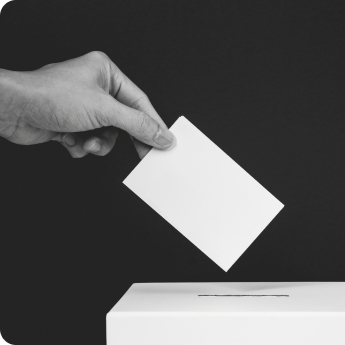Press Releases
Flashback, 2001: In 50-50 Senate Under Democratic Control, Bush’s Nominees “Breezed Through Their Senate Committee Hearings”
After the historically close and contentious 2000 election, Democrats, who had control of the Senate leading up to Inauguration, ensured a speedy confirmation process for Bush nominees
12 out of 14 of Bush’s Cabinet nominees had hearings before Inauguration Day, 7 were confirmed on January 20
Bush was able to assemble his full Cabinet within 12 days after taking office; the fate of Biden’s Cabinet remains uncertain
Washington, D.C. – Today, the Accountable Senate War Room released a report outlining the drastic differences between how the Senate handled the Bush and Biden Cabinets’ respective confirmation processes following the 2000 and 2020 elections, both with a 50-50 Senate split. With Democrats controlling the Senate leading up to the 2001 Inauguration, they fulfilled their duty to ensure the incoming Bush administration was prepared to lead on day one, including holding hearings for 12 of President Bush’s 14 Cabinet nominees before Inauguration Day. By contrast, following the 2020 election, Senate Republicans delayed, obstructed, and stalled the confirmation process for President-elect Biden’s Cabinet.
Because the Democrat-led Senate held hearings for a dozen of Bush’s Cabinet nominees ahead of Inauguration Day in 2001, Bush had seven members of his Cabinet confirmed “just hours” after his inauguration. Under Democratic Majority Leader Tom Daschle, the average Bush Cabinet nominee received a hearing roughly three weeks after their announcement, described overall as “breez[ing]” through the nomination process. Daschle’s commitment to a timely process for nominees was described as “classy” and “gracious” by veteran Republican officials. However, under Republican Majority Leader Mitch McConnell, Senate Republicans stonewalled the confirmation of President Biden’s nominees, only holding five hearings, all just one day before Biden’s inauguration — and confirmations are at risk of being delayed by “days or even weeks.”
“As President Biden enters office ready to tackle our country’s biggest challenges, it is no thanks to the unprecedented obstructionism we’ve seen from Senate Republicans over the last month,” said Mairead Lynn, spokesperson for Accountable.US Senate War Room. “We don’t have to wonder what would happen if the shoe was on the other foot — under Majority Leader Daschle, Senate Democrats fulfilled their duty and kept the confirmation processes for Bush’s Cabinet nominees moving. It’s time for Senate Republicans to work with their colleagues across the aisle to get Biden’s nominees vetted and confirmed as quickly as possible so they can join President Biden in cleaning up Trump’s messes, getting the pandemic under control, and rebuilding our economy.”
Below are some of the key points highlighting the speed at which Senate Democrats confirmed the incoming Bush administration’s Cabinet nominees during the 2000-2001 lame duck period:
- Over 85 percent of Bush’s Cabinet nominees had a hearing before Inauguration Day, and, on average, the Democratic Senate gave Bush’s nominees a hearing within three weeks of their announcement. Of 14 Cabinet-level positions, only two nominees received hearings after Jan. 18. Labor Secretary Elaine Chao and Transportation Secretary Norman Mineta were both announced in January 2001 and received hearings a mere 13 and 22 days after their respective announcements. Notably, Chao was Bush’s second nominee to head the Labor Department after his first, Linda Chavez, withdrew.
- On average, Bush nominees were confirmed less than a month after their announcement. The longest delay from announcement to confirmation was Bush’s controversial pick for attorney general, John Ashcroft, who was confirmed on Feb. 1, by a 58-42 margin just 38 days after his Dec. 22 announcement. The ranking Democrat on the Senate Judiciary Committee refused to filibuster Ashcroft’s nomination, saying, “I’m not going to be a part of that.”
- As Democratic Senate Majority Leader Tom Daschle predicted, Bush was able to assemble a full Cabinet a mere 12 days after taking office as half of Bush’s nominees were confirmed via voice vote “just hours” after his inauguration. Asked about Bush Cabinet nominees, Daschle said, “Ultimately, I think, most nominees are going to be confirmed quite easily.” Ultimately, eight nominees were confirmed via voice vote and four were confirmed by votes of 100-0. The two that were confirmed via roll call vote with less than 100 percent support were the controversial picks of John Ashcroft for attorney general (58-42) and Gale Norton for interior secretary (75-24), who were still confirmed by comfortable margins. The New York Times reported that by and large Bush nominees “breezed” through the confirmation process.
- Then-Republican Senate Leader Trent Lott praised the Democratic Majority Leader Tom Daschle. Lott set the example for the Republican caucus, calling for bipartisanship, saying, “We don’t want a prescription for gridlock,” and “we’ll show during the next 17 days and more importantly during the months beyond that, that we will always find a way to work together.” The Washington Times reported “even veteran Republican officials” praised Daschle as “classy” and “gracious.”
Despite Democrat Control And A Bitter Election Fight, Bush’s Nominees “Breezed Through Their Senate Committee Hearings,” Which Were Primarily Held In The Two Weeks Before Bush’s Inauguration.
Bush’s Nominees “Breezed Through Their Senate Committee Hearings,” Which Were Held Over The Two Weeks Before Inauguration. “Senate approval of Bush’s nominees, who had breezed through their Senate committee hearings held over the past two weeks, is the final step before they are formally sworn into office.” [New York Times, 1/20/01]
The Average Bush Cabinet Nominee Received A Hearing Roughly Three Weeks After Their Announcement And Were Confirmed, On Average, Less Than Four Weeks After Announcement. [United States Senate, “George W. Bush Cabinet Nominations,” accessed 1/12/21]
###
